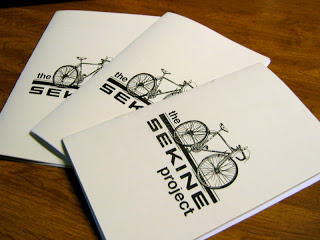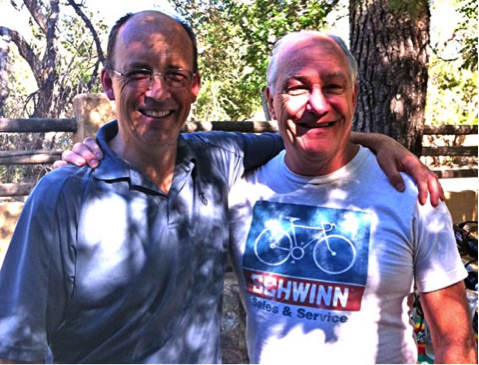Part 6: An Enduring Legacy

The Legend Lives on….
It
has been nearly four decades since the last Sekine was produced at the
Rivers facility, but the name and the reputation of Sekine bikes has
endured. It’s easy today to find friends and acquaintances who fondly
remember their Sekine. Many still have them.
But the story is
more than just about bikes. It is about international trade
partnerships. It was an element of globalization before the term was
popular (or unpopular). Businessmen and engineers from Japan came to
this modest prairie town, and interacted with local businessmen,
municipal officials and factory employees.
It was an example of a rural development partnership between levels of
government and a community, and I am sure that lessons were learned. It
was an experiment in collaboration between government, a community, an
industry, and a First Nations organization. The involvement of
the Manitoba Indian Brotherhood reflected efforts at partnerships, and
early efforts at what we now call reconciliation. Every step in that
process is an essential part in a process of coming to terms with the
injustices of the past.
It is a story about finding ways to make practical use this amazing
local facility that was such an important part of the wartime effort
and the peacetime mission of the Canadian Forces. The base was an
important factor in the economic, and cultural life of the town of
Rivers. When it closed there was naturally an interest in finding a use
for the infrastructure.
Looking back, because it was only viable for a relatively short time,
we might question the end results, but instead we should look at it as
worthy effort, a much-needed experiment, that brought many positive
results.
The
Sekine Zine

One
of the many efforts to keep the story alive is the Sekine Zine –
a black-and-white, 36-page photocopied booklet that details the history
of Sekine Canada Ltd. and includes photos and tidbits you won't find
anywhere online. If you've ever wondered about Sekine bicycles, where
or how they were made, this zine has all that information- and more.
It's not a detailed guide to specific bicycle models, many of those are
available online, but contains general identification pointers, a
serial number guide, and an extensive reference list for further
reading. It is a valuable resource for the bike enthusiast.
Anyone wanting multiple copies should email at rodoftheflies
@yahoo.ca. As of January 2019, zines were still available.
A World Tour – On a Sekine
In
1880 Sekine Canada invited a special guest to the factory at
Oo-Za-We-Kwun. It was Richard DeBernardis. That is the same Richard
DeBernardis who appears in the 1980 Guinness Book of World Records.
The connection?
On Sept 10, 1978
Mr. DeBernardis set out on a journey – his goal was to
travel the perimeter of the United States. His transportation? A
Manitoba made Sekine bike that he had purchased in Anchorage Alaska,
and that had already taken him from Alaska to Mexico in 1976.
He set out from
Seattle in September 10, 1978 with a bike loaded with
25 kilograms of gear, and in 180 days he pedaled 12.092 miles before
rolling in to Seattle on March 8, 1979.
He donated the
bike he had used to the Guinness Museum in San Francisco
so Sekine so Canada flew him from Los Angeles to Manitoba, brought him
out to th Sekine plant, and gave him a new one.
He needed it for
his next trip. On September 10. 1981 he left Tokyo,
Japan and cycled 6235 around the perimeter of Japan. He became the
first person to cycle the perimeter of Japan’s four main islands and
did it in 77 days. He donated that bike to the Guinness Museum in Tokyo.
Richard later
founded the Perimeter Bicycling Association, which helps
organize cycling events like the “El Tour de Tucson” a long-distance
charity event. His original Sekine, is now back in his possession and
proudly displayed on the wall over his desk in his office in Tucson
Arizona.

Richard DeBernardis (Right) with Andy Clarke in 2011